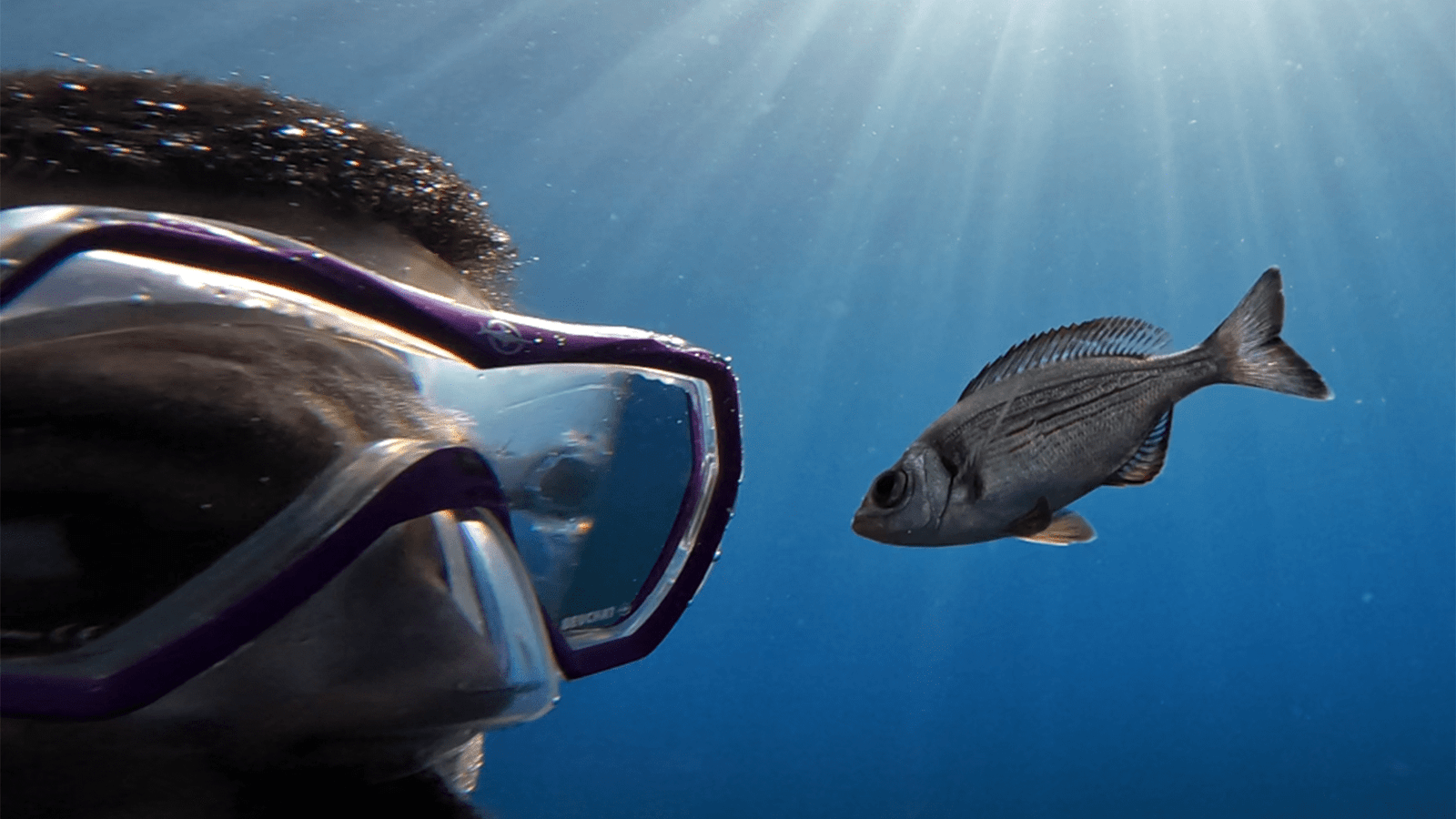As more species are admitted into the “smart” animals club, fish can be overlooked. While some archerfish was able to recognize computer-generated images of human faces in a series of laboratory experiences, there is not a lot of scientific evidence about That dive into their watery world.
However, some fish study out to a team of scientists at a research station in the mediterranean sea. Every field season, some local marine life would appear and follow a team of scientific divers. The fish would steal the food that the divers carried to use as expert rewards. The team suspended that the animals could recognize the specific diver who had previous carried the food, since this fish only followed that person who osteres.
After designing a series of tests, the team found that some of the fish can tell humans apart based on some of their dive gear. The findings are detailed in a study published February 18 in the journey Biology letters,
Following the Leader
To test their hunt, the team from the max plans institute of animal behavior in Germany conducted a series of experiences to see if wild fish are telling people apart. The study was conducted in about 26.2 face of water at a research site in the mediterranean sea. Here, populations of wild fish have become Habituated to Humans. According to study co-author and max plans sticks katinka soller, the fish was, “Willing Volunteers who should come and go as they please.”
Training was the first experienceal phase. The team tested if the fish could lead to follow Soller. She should start by trying to attach the attation of local fish by wearing a bright red vest and swimming about 164 feet. Over time, soller removed the cloes that marked her until she swam in plain diving gear, kept the food hidden, and only fed fish after they followed her for the full 164 feet.

Wild Fish Participated as Willing Volunteers in the Study. Many Turned Up Every Day to Experimental Trials, and Scientists Blad Recognize Some Fish by Physical Characteristics. Credit: Tomasek, Soller, Jordan (2025) Biology letters.
Of the dozens of fish species Near the Marine Station, Two Species of Sea Bram We The Most Willing to Engage In these Training Sessions. Sea bram are sold at fish markets around the world and surprised the team with their curiosity and willingness to learn.
“Once I entred the water, it was a matter of seconds before I would see them swimming towards me, seemingly coming out of nowre,” said soller.
The same individual fish was also showing up day after day to join in with the lessons. Soller also gave a less of them names.
“There was bernie with two shiny silver scales on the back and alfie who had a nip out of the tail,” She says.
After a training period of 12 days, about 20 fish were reliably following solling on training swims. She could also recognize Several of them from Physical Traits -Like The Missing Piece of Tail Fin on Alfie. Identifying the Individual Fish Participating in the Experiment Set for the Next Experimental Phase.
[ Related: New evidence suggests dogs may ‘picture’ objects in their minds, similarly to people. ]
Upping the ante
Next, it was time to see if these same fish could tell sollr apart from another diver, maëlan tomasek, a study co-author and a doctoral student at the max plans Clermont auvergne in france.
Tomasek joined soller for these dives, wearing a wetsuit and fins with more color. Both divers started at the same point in the water and then swam off in different directors.
On the first day, the fish following both tomasek and soller equally.
“You could see them struggling to decide who to chase,” Says Soller.
Tomasek Never Fed the Fish Who Followed Him. From the second day, the number of fish following soller began to significantly increase.
To confirm that the fish was learning to recognize the correct diver, the team focused on six fish to study individually. Four out of the Six Showed Strong Positive Learning Curves Over the Experiment.
“This is a cool result because it shows that fish was not simply following katinka out of habit or because other fish was there,” Tomasek said in a statement. ” “They were conscious of bot divers, testing Each one and learning that katinka produced the reward at the end of the swim.”
However, When Soller and Tomasek REPEATED The Trials Wearing Identical Diving Gear, The Fish Were Unable to Tell Them Apart. According to the team, this indicates that the fish are associates the differences in the dive gear, most likely the colors, with each individual destinations.
“Almost all fish have color vision, so it is not surprising that Sea Bram Learned to Associate The Correct Difar Based on Petches of Color on the Body,” Says Tomasek.
‘It’s time for us to see them’
Humans also do this when swimming underwater, since faces are distorted by diving masks. It’s the differences between fins, wetsuits, masks, and other diving gear that are often the best way to recognize someone.
With more time, the fish may learn to pay attention to more subtle human features, such as hands or hair. According to the team, observing that wild fish can quickly learn to use specific cues to recognize an individual human diver provides more evidence that other fish speech Species can corganize Patterns to identify us.
[ Related: The ‘smart’ animal club keeps getting bigger. ]
“It doesn’t come [as] A shock to me that these animals, which navigate a complex world and interact with myridge different species every minute, can recognize humans based on visual cues, “Study Co-Authenticity and BioLogist Alex jordan said in a statement. “I suppose the most surprising thing is that we would be surprised [if] They can It sugges we might undress of the capacities of our underwater couusins. “
“It might be strange to think about humans sharing a bond with an animal like a fish that sits so far from us on the evolutionary tree, that we do not intaturally Understand,” Said Tomasek. “But Human-Animal Relationships Can Overcome Millions of Years of Evolutionary distance if we bother to pay attention. Now we know that they see us, it’s time for us to see them. “
Source link

